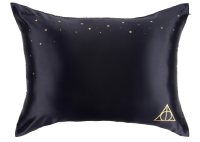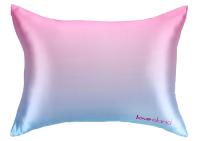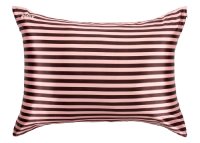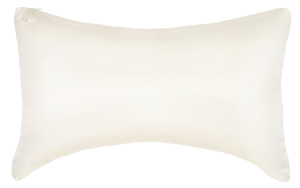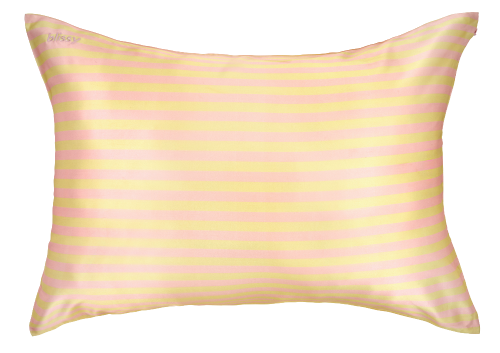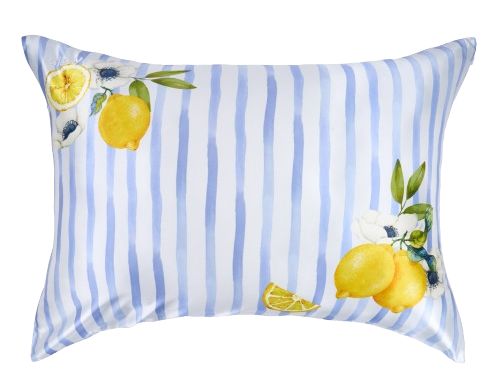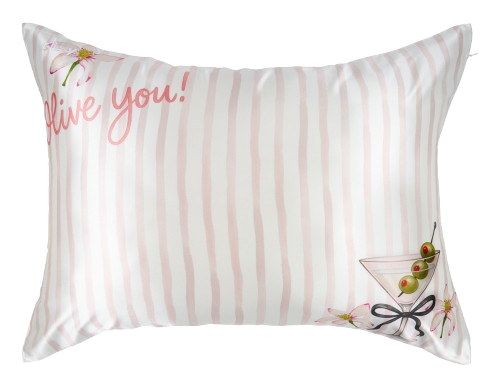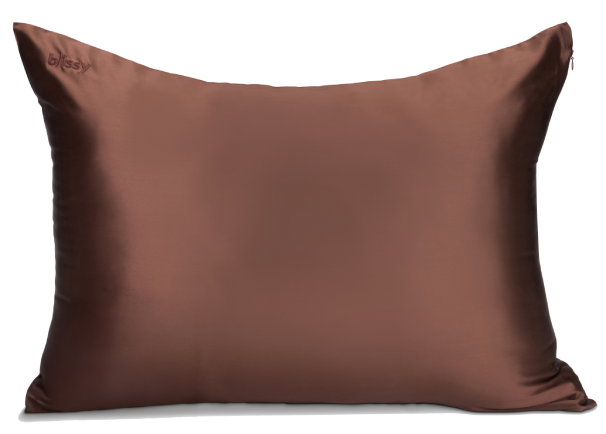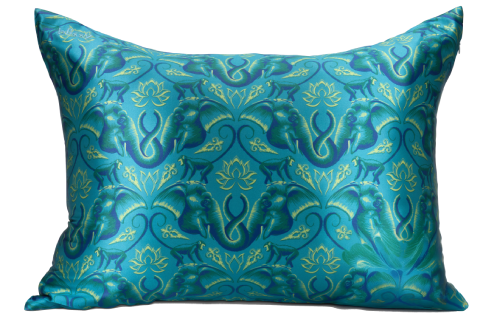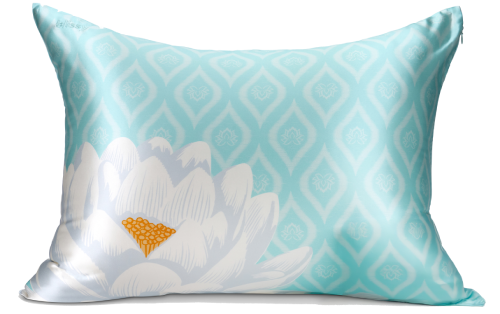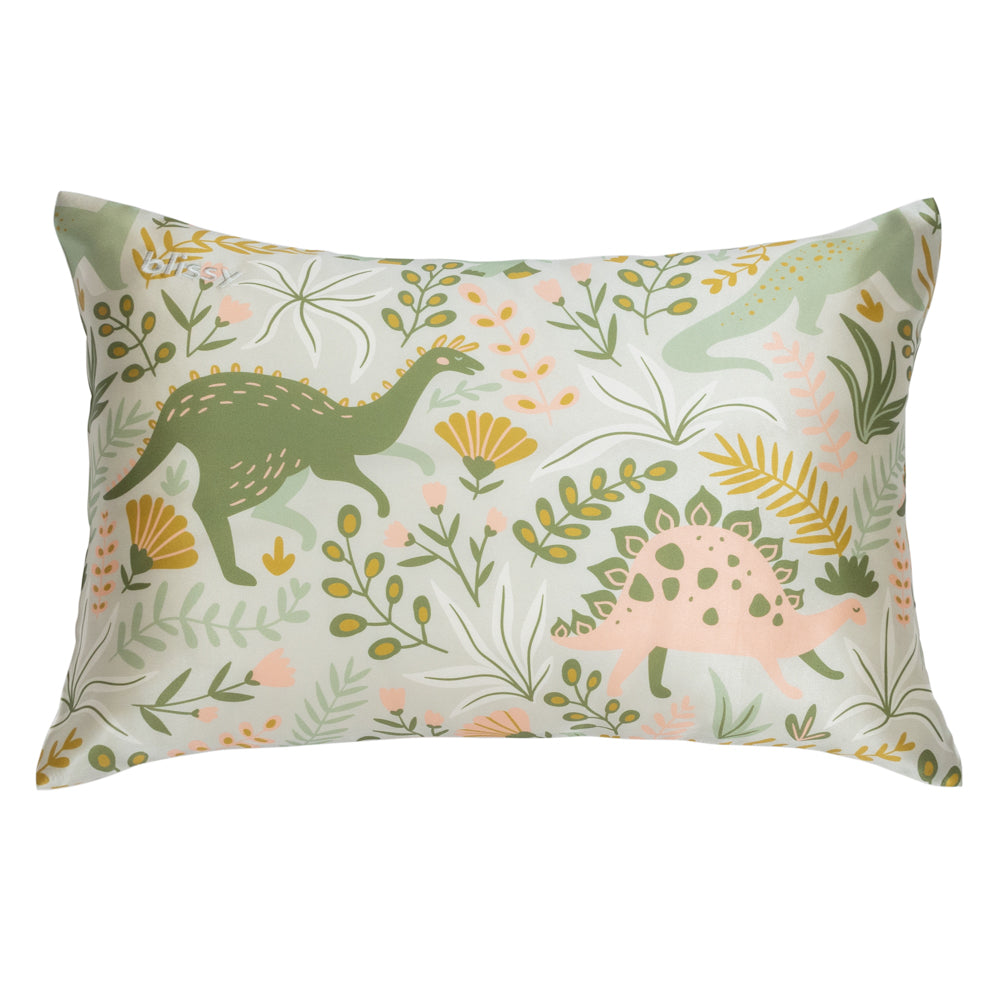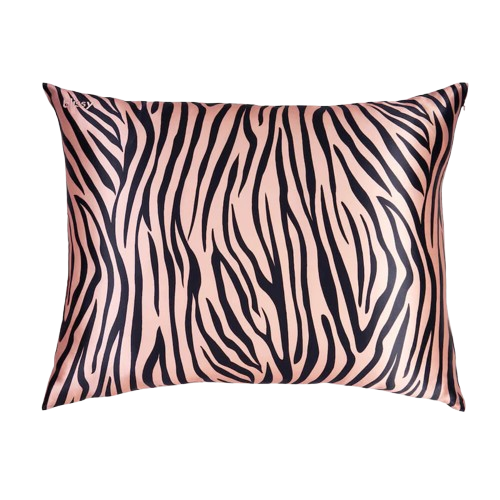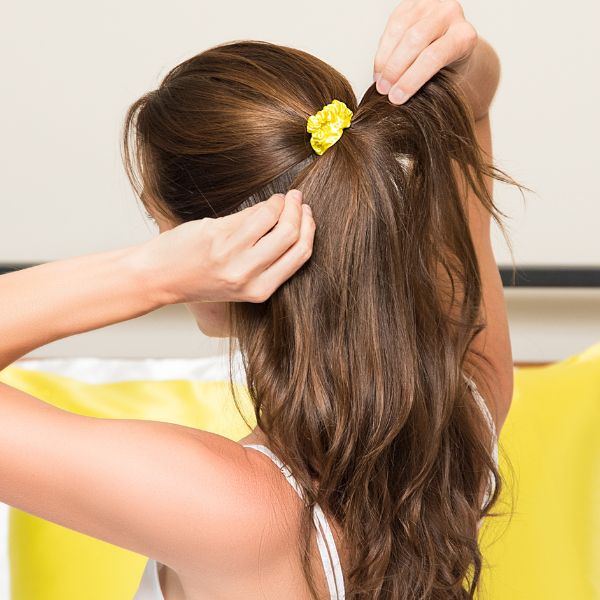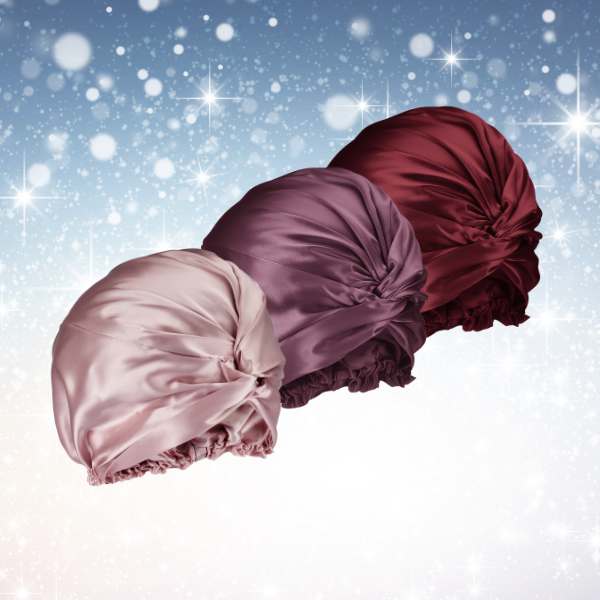Key takeaways:
-
Silk pillowcases reduce friction and prevent tangles.
-
Regular conditioning and detangling products are essential.
-
Proper brushing techniques help minimize knots.
-
Protective hairstyles and regular trims maintain smooth hair.
The last thing you need after getting a fresh and fabulous new haircut is tangles. Unfortunately, this frustrating problem is common for certain hair types and styles.
On the upside, easy ways exist to treat hair knots and prevent them altogether! From the material of your pillowcase to how you brush your hair, simple switches to your hair care routine can make all the difference.
Before we talk fixes—let's discuss why hair tangles happen after a cut in the first place.
Common Causes of Tangled Hair After a Cut
Tangled hair after cut? Hairstyle, texture, weather conditions, and improper hair care routines contribute to increased tangling.
Hair texture
Certain hair textures have a higher chance of knotting. If you have naturally curly hair, unfortunately, your big, voluminous curls are at the highest risk for tangles. Their coil pattern makes them more prone to wrapping around other hair strands. Curls also take up more surface area than fine, straight hair. This provides ample opportunity for strands to tangle.
Plus, curly hair tends to retain less moisture than other hair types. Natural oils from the scalp have a tougher time traveling down the hair shafts' twists and turns. Curls can quickly become dry, brittle, and tangled without proper intervention.
Although naturally textured hair is the most susceptible to tangles, other hair types can suffer, too. Straight, fine hair tends to lie flat and smooth, making it less likely to knot. But, even straight strands can lock up if there's dryness, hair damage, or adverse weather.
Hairstyle
Some hairstyles are more likely to cause knotting than others.
The following haircuts are most likely to tangle:
-
Layered cuts: Lots of short, choppy layers can lead to tangling
-
Feathered or textured cuts: Ends are more prone to catching on each other
-
Shaggy styles: Messier cuts have varying lengths of layers that lead to tangles
-
Thin ends: Haircuts with wispy ends easily entwine
Aside from your cut, your hair's length also affects how badly it can tangle. Longer hair tangles more readily than shorter hair.
Like curly hair, long hair has more surface area, making it prone to knots. The length and weight of longer hair cause more movement, leading to overlapping and twisting hair strands. Long hair also experiences more friction as it rubs against clothing, pillows, and other surfaces throughout the day. This increased friction causes hair to catch on itself more often.

Weather
Environmental factors play a huge role in increased tangling.
Here are the worst weather conditions for your hair:
-
Humidity: High humidity can cause frizzy hair, leading to tangles. This is especially problematic for curly and wavy hair.
-
Wind: Gusty weather can blow your hair around, making long strands wrap around each other.
-
Dry air: Cold, dry weather can leave hair brittle and tangle-prone. Static electricity is common in dry conditions, causing hair to cling together and form knots.
-
Rain: Wet hair expands and clumps together. Proper styling and protection will help you avoid wet weather woes.
Improper hair care
Avoid tangling by starting with strong foundations for healthy hair. A hair care routine tailored to your hair type will help your locks stay hydrated, smooth, glossy, and tangle-free.
Tangled hair after cut? The following common hair care mistakes can lead to unhappy hair and tangles:
-
Not using conditioner or moisturizing treatments
-
Inadequate detangling
-
Over-washing
-
Using harsh products
-
Drying wet hair vigorously with a towel
-
Skipping heat protection
-
Neglecting regular haircuts
Solution 1: Use a Silk Pillowcase Like Blissy
We spend about a third of our lives asleep—hair must be properly cared for during those many hours of beauty rest! The best way to nourish hair and avoid tangles after a cut is by sleeping on a pure silk pillowcase. The Blissy Silk Pillowcase is a top solution for smooth, healthy hair overnight.

Why silk matters
Silk has intrinsic properties that make it a revered fabric for hair care. Sleeping on a silk pillowcase reduces friction on hair strands and moisturizes hair. Your hair's natural oils will stay where they belong, leading to fewer tangles and smoother, glossier hair.
Hair benefits of sleeping on a silk pillowcase:
-
Less frizz, breakage, split ends, and tangles
-
More shine
-
No bedhead
-
Cooling and moisture-wicking—perfect for hot sleepers
-
Ultra-soft and comfortable for improved sleep—less tossing and turning on hair
Quick tip: A synthetic satin pillowcase won't prevent tangles as effectively as a silk pillowcase. Silk offers superior hair care benefits.
Benefits of Blissy
Blissy Silk Pillowcases are crafted from luxurious, grade 6A mulberry silk. Just 1-3% of silk products meet the standards for this premium grade. Our top-tier silk and meticulous craftsmanship ensure exceptional quality and a deluxe experience.
Blissy's high-quality silk pillowcases are eco-friendly, non-toxic, and certified safe by OEKO-TEX®. Rest easy each night, knowing you're nourishing your hair and skin as you sleep.
More benefits of our silk pillowcase:
-
It'll keep your hair and skin hydrated
-
It's low-friction—43% less friction than cotton
-
It's hypoallergenic and suitable for those with delicate skin
-
It comes in more than 70 colors to enhance your bedroom decor
-
It's machine-washable and low-maintenance—no need to hand wash
Solution 2: Regular Conditioning and Detangling Products

Experiencing tangled hair after a cut? You might not be conditioning or detangling your hair properly. It's essential to keep your hair moisturized to avoid damaged hair and tangles.
Always condition your hair after each shampoo. On wash day, you can even apply leave-in conditioner for extra moisture. If you have curls, it's best to use a leave-in product tailored to textured hair, like Curlsmith's.
Incorporate a hair mask into your hair care routine to better maintain smoothness. Generally, you should use a mask once or twice a month. But, if you have very damaged, processed hair, you should use a hair mask twice weekly.
In between wash days, you can apply hair oil, like coconut oil or argan oil, to thwart dryness and help prevent tangling.
If you struggle with severely matted hair, you may need a more intensive repair treatment. Try a deep conditioner, like SheaMoisture's, which targets dryness and damage. Let the deep conditioning product sit for up to 30 minutes before rinsing. This will allow it to better absorb into the hair cuticles.
After, spritz a detangling spray like this one evenly throughout your hair to help avoid damage while carefully combing out knots.
Solution 3: Proper Brushing Techniques
A simple way to prevent matted hair and hair tangling? Comb and brush hair daily!

Combing tips
Remove tangles first with a wide-toothed comb. A wide-tooth comb minimizes breakage and tension on hair strands. Gently start at the bottom and work your way up. If your hair is quite tangled, it’s easier to first separate it into manageable sections.
Detangle hair easily with a wide-tooth comb while your hair is wet. Although wet hair is more fragile, it's easier to detangle. It's also ideal to comb textured hair when wet—it helps maintain the curl pattern and reduce frizz. Apply leave-in conditioner or detangling spray before combing to lessen the risk of breakage.
Quick tip: Metal combs can cause static and breakage. Opt for a plastic or wood comb instead.
Brushing techniques
After combing your hair, remove the remaining tangles with a brush.
Protect the hair shaft by gently brushing hair starting at the ends before working your way up to the root. Brush with short, light strokes to avoid pulling or breaking hair. Use an anti-static detangling brush that reduces friction and stress on hair, like the UNbrush.
Avoid brushing wet hair, as it's more prone to breakage. It's best to brush dry hair or slightly damp hair. And, although you should brush hair daily, don't overbrush—1-2 times per day is ideal.
Solution 4: Protective Hairstyles
Want to avoid tangled hair after cut? Minimize tangles with a protective style. They're especially helpful when worn overnight, as they'll keep your hair smooth and tangle-free.

Try these protective styles along with our silk pillowcase, to prevent tangles while you sleep:
-
Loose braid: A simple, loose braid will keep hair from tangling without pulling on your scalp.
-
Twists: Twist your hair into 2 strands to help protect textured hair.
-
Low bun: Pull hair into a loose bun at the nape of the neck.
-
Pineapple: This method best protects curl patterns. Gather your hair into a loose, high ponytail at the top of your head.
Solution 5: Regular Trims and Hair Care Maintenance

Prevent hair tangling by getting regular haircuts. Split ends are more likely to form if you don't trim your hair often. And, the longer you wait to trim off split ends, the further that damage travels up the hair shaft. Damaged hair tangles more readily than healthy hair.
Your hair's length, texture, and damage level determine the frequency of your salon visits:
-
Short hair: 3-7 weeks
-
Medium hair: 3-4 times per year
-
Long hair: 8 weeks
-
Curly and textured hair: 6-12 weeks
-
Fine hair: 4-8 weeks
-
Damaged hair: 8 weeks
Preventing Tangles After a Cut
Tangled hair after cut? Don't stress! Adopting these solutions will tame tangled tresses and prevent them from returning.
If you're ready for gorgeous glossy hair long-term, be sure to incorporate silk into your hair care routine. Sleeping on a Blissy Silk Pillowcase is one of the easiest—and most effective—ways to maintain sleek, lustrous strands.



